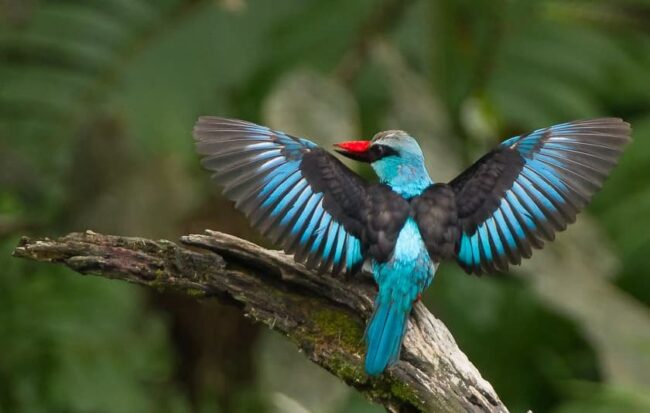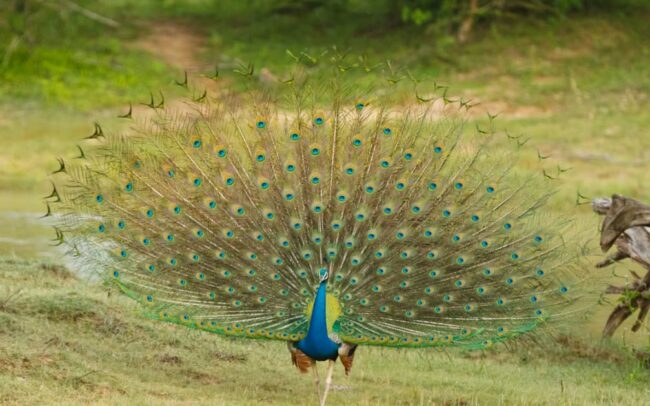The skies resound with the melodious voices of birds around the world on any given day. Glancing out of your window, you may even catch a glimpse of a bird engaged in a captivating display for its partner or neighbor.
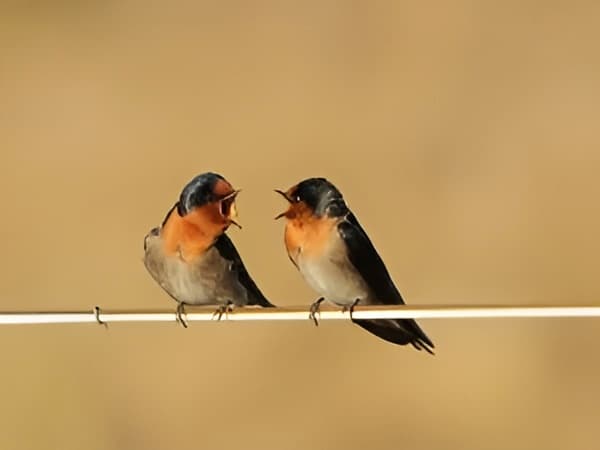
Birds are incredibly communicative creatures, employing various means to convey their messages to one another. So, how exactly do birds communicate and what messages are they sharing?
Birds produce a remarkable repertoire of sounds, ranging from high-pitched whistles to deep hoots and everything in between. Each of these sounds serves a communicative purpose within their species. However, birds possess an additional, and perhaps even more diverse, mode of communication. They convey messages through their movements, colors, and feather development.
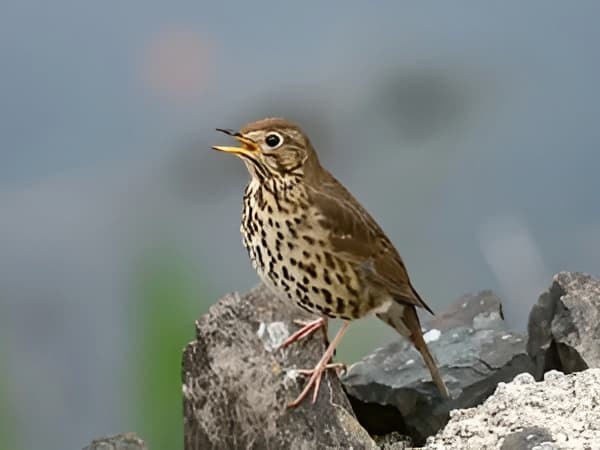
Birds communicate for various reasons, whether to attract others or to establish boundaries. They can recognize each other by their distinct voices and employ sounds and actions to stay connected, request food, and even sound the alarm in the face of danger.
Different methods of avian communication
Communication between individuals of any species, birds included, relies on the transmission and reception of information in a format that can be perceived and understood by both parties. Birds, with their highly developed senses of hearing and sight, utilize these modalities to communicate with one another.
Continue reading to explore how birds communicate through sounds and actions.
Vocal Communication
Vocal communication in birds can be categorized into two types: songs and calls. While these terms are often used interchangeably, scientists distinguish them based on their messages and functions.
Songs
Birds employ songs for reproductive purposes. Some birds, such as wood thrushes and song sparrows, produce wonderfully musical songs, while others may not possess the same melodic abilities. Nevertheless, these songs effectively convey their intended messages to other birds.
Bird songs are often lengthy and complex, sometimes involving the simultaneous production of two distinct sounds. The quality of a male bird’s song can indicate its health and fitness. This information can be useful in attracting a female or asserting dominance within its territory.
Calls
Birds utilize shorter, less intricate sounds to communicate a wide range of information. Contact calls, for example, are typically soft and somewhat indistinct sounds that birds use to stay in touch with one another while foraging. These calls need to be loud enough for all individuals within a pair or group to hear but subtle enough to avoid attracting the attention of potential predators.
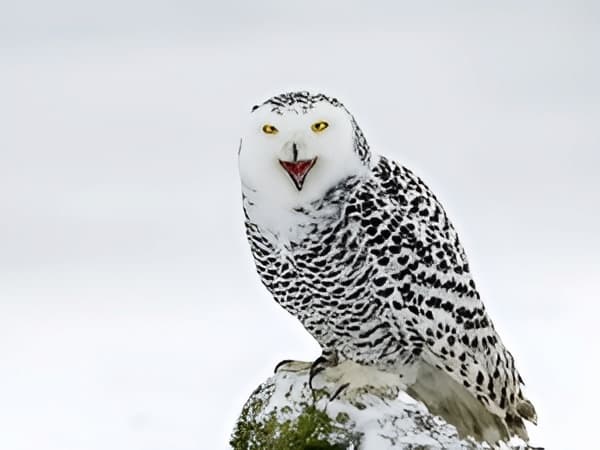
Alarm calls are louder sounds produced by birds when they detect a threat, such as an owl or a cat. These harsh calls alert nearby birds and may serve to deter the predator by revealing its presence.
Non-vocal sounds
Birds typically generate sounds for communication using their syrinx, a structure located in their chest area that is analogous to our larynx or voice box. However, some birds produce sounds in unconventional ways. Here are a few examples of non-vocal sounds:
- Woodpeckers drumming on wood and resonant objects.
- Owls and other birds snapping their bills together.
- Pigeons and owls employing wing clapping to signal alarm or attract potential mates.
Visual Communication
While birds are well-known for their vocalizations and sound-based communication, they are also capable of communicating silently through movements and gestures. This form of communication, known as display, allows birds to convey messages visually.
Birds employ a variety of movements to communicate simple messages. For instance, when observing a group of birds around a feeder, you may notice the following movements:
- Head movements, such as bobbing or tilting.
- Wing movements, such as shaking or lifting.
- Crouching.
- Raising feathers and crests.
Simple body language like this is often used to establish dominance or submission. However, birds also employ more elaborate movements during territorial disputes. The most intricate displays are often observed when male birds attempt to attract females.
Mating displays frequently showcase a male bird’s most alluring features, such as bright colors and long feathers that many species develop during the breeding season.
Some birds engage in more elaborate displays than others, featuring wonderfully choreographed dances or acrobatic demonstrations of their flying prowess.
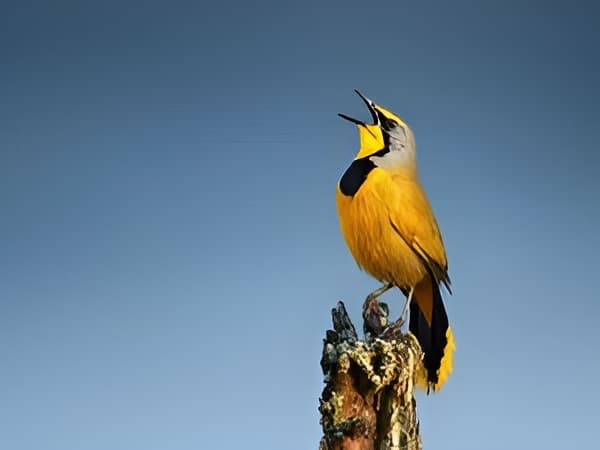
Can birds communicate with other species?
Birds have limited reasons to communicate with other species, but there are instances where this ability proves beneficial.
Birds can communicate with other species when they feel threatened. When under attack, a bird may attempt to make itself appear larger and more intimidating, deterring potential attackers. Birds achieve this by spreading their wings and puffing out their feathers. Young owls exemplify this behavior.
In addition to visually intimidating their adversaries, birds emit alarm and distress calls, shrieks, and even hissing sounds. Birds also produce alarm calls when they are not directly threatened, serving to alert other birds in the vicinity.
Birds of various species respond to these alarm calls, indicating their understanding of the message.
How do birds communicate over long distances?
Birds utilize songs and calls to communicate over long distances. This form of communication offers numerous advantages. For instance, birds do not need to visually locate one another, which proves advantageous in dense environments such as forests, swamps, or during nighttime. Communicating through sound allows birds to remain concealed and safe from predators.
To what extent can birds communicate?
The distance over which bird calls and songs can carry depends on factors such as the surrounding environment, weather conditions, call volume, and frequency. Simple, low-frequency calls, such as those produced by ostriches and cassowaries, are better suited for long-distance communication.
Owl hoots can travel considerable distances due to their low frequency and the calm conditions prevailing at night, with minimal interference. Owls often occupy large territories and possess excellent hearing to detect the calls of neighboring individuals. For example, snowy owls frequently maintain territories spanning over a thousand acres and their calls can be heard from distances of up to 7 miles.
Do birds inform each other about food sources?
Birds primarily locate food through visual cues, but they also possess a keen awareness of the sounds produced by other birds. The excited calls of birds congregated around a feeder or natural food source are likely to attract other curious and hungry birds in the area.
How do birds communicate during flight?
Many birds, such as Swainson’s thrushes, migrate at night in groups or flocks. This behavior helps them evade predators and minimizes the impact of wind during flight. How do they avoid colliding with one another or with birds moving in different directions? The solution lies in emitting soft, regular calls that help maintain proper spacing and ensure that all individuals are traveling in the same direction.
How do birds communicate visually?
Birds engage in both passive and active visual communication. Passive communication is involuntary and influenced by factors such as testosterone levels and an individual’s genetic traits. A classic example of passive communication is the development of brightly colored plumage by male birds during the breeding season. Birds may also grow longer feathers or exhibit changes in color around their legs, bills, and eyes.
Active communication involves specific postures, movements, feather manipulation, and flight patterns. Head-bobbing displays between territorial northern flickers or the enchanting dances of sharp-tailed grouses on the American prairie exemplify visual communication.
How do birds communicate with humans?
Wild birds typically do not communicate directly with humans, but pet birds often establish forms of communication, both vocal and visual, that their attentive owners can learn to understand. Nevertheless, there are interesting cases in the avian world where wild birds communicate with humans.
The Greater Honeyguide of Africa actively communicates with people to guide them to honey sources. These birds employ distinct calls and movements to capture human attention. Astonishingly, they even respond when called by humans. By guiding people to bee nests, the birds gain access to wax, which constitutes part of their diet.
Can birds communicate with their offspring?
Parent birds do not typically engage in obvious forms of communication with their offspring. However, one intriguing example of parent-baby communication can be observed in seagulls. The red spot on an adult seagull’s bill serves as a passive signal for the chicks to beg for food. The chicks instinctively peck at the red spot and refrain from attempting to feed from birds lacking this characteristic marking.
If you’ve ever been near a nest teeming with hungry chicks, you are well aware that baby birds communicate with their parents. The message is simple: “Feed me!” Baby birds emit basic vocalizations to convey this message, but they also utilize visual communication to stimulate their parents’ feeding response. Many baby birds possess brightly colored mouth linings, and by opening their mouths and displaying these colors, they encourage their parents to provide sustenance.
